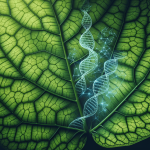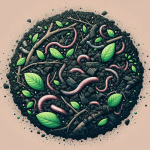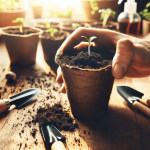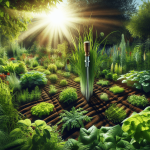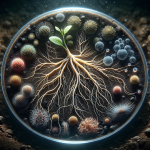This post may contain affiliate links. As an Amazon Associate, we may earn commissions from qualifying purchases.
Embarking on the journey of growing hydroponic plants at home can transform your living space into a lush, green oasis, and trust me, it’s easier than you might think. In your pursuit of fresh, pesticide-free produce or simply the joy of cultivating your own green corner, the world of hydroponics offers a fascinating way to garden indoors. This method not only saves space but also uses water efficiently, making it a smart choice for urban dwellers and environmentally conscious individuals alike. Whether you’re a seasoned gardener or a curious newbie, learning how to nurture plants without soil opens up a whole new realm of gardening possibilities right in your own home.
Understanding Hydroponics
Definition and principles of hydroponics
Hydroponics, at its core, is a method of growing plants without soil, using mineral nutrient solutions in an aqueous solvent. This innovative farming technique allows you to grow plants in a controlled environment, optimizing growth and efficiency. The primary principle behind hydroponics is to provide plants exactly what they need, precisely when they need it. By doing so, your plants can achieve faster growth rates and higher yields compared to traditional soil gardening.
Advantages of hydroponic gardening
One of the most compelling advantages of hydroponic gardening is that it requires less water than soil-based gardening. Since the system is closed and water is recirculated, evaporation is minimal. Additionally, hydroponics allows for higher density planting, leading to more produce in a smaller area. It’s also a boon for those with unsuitable soil conditions or limited space, as it can be done indoors. Moreover, you get to say goodbye to weeding and significantly reduce pests and diseases associated with soil.
Different hydroponic systems explained
Hydroponic systems vary mainly in the way they deliver nutrients and oxygen to the plants. Among the popular systems are Deep Water Culture (DWC), Nutrient Film Technique (NFT), Ebb and Flow, and Aeroponics. Each system has its unique approach, from suspending roots directly in nutrient-rich water to spraying roots with a fine mist of nutrients. Choosing the right system often depends on your specific needs, the space available, and the types of plants you want to grow.
Choosing a Hydroponic System
Deep water culture (DWC)
DWC is ideal for beginners because of its simplicity and low maintenance. In this system, plants are suspended in a nutrient-filled solution, allowing their roots to absorb water, oxygen, and nutrients directly. An air pump oxygenates the solution, preventing root rot and encouraging rapid growth. This method works great for leafy greens and herbs.
Nutrient film technique (NFT)
In an NFT system, a thin film of nutrient solution flows continuously over the roots, which are suspended in a gutter. The continuous flow ensures that the roots receive ample nutrients and oxygen. It’s particularly effective for growing a variety of vegetables and is quite space-efficient.
Ebb and flow system
The ebb and flow system, also known as flood and drain, works by flooding the plant root zone with a nutrient solution at specific intervals and then allowing it to drain away. This action mimics nature’s own tidal system, providing roots with nutrients and then giving them time to breathe. It’s versatile and can support a wide range of plant sizes.
Aeroponics
Aeroponics is a high-tech method that mists the roots with a nutrient solution while they hang in the air. This system allows roots to absorb nutrients more efficiently and has been shown to foster exceptionally rapid plant growth. Aeroponics requires more monitoring and maintenance but can yield incredible results.
Comparing the systems for home use
For home gardeners, the choice among these systems often comes down to balancing ease of use, space, and the types of plants you wish to grow. DWC and NFT are great entry points for beginners, while ebb and flow and aeroponics can offer more control and efficiency for those willing to invest more time and resources.
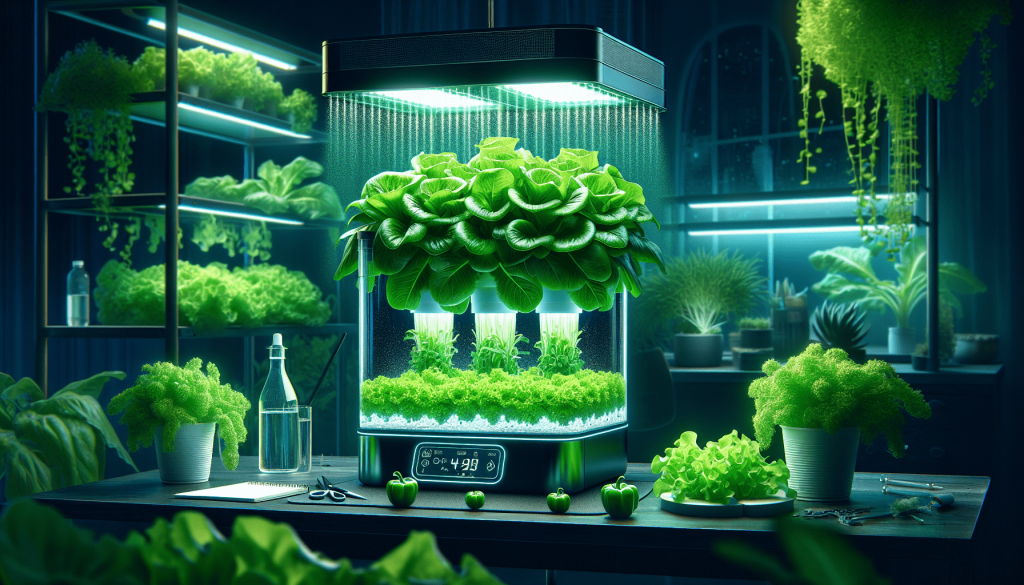
Selecting Plants for Hydroponics
Best plants for hydroponic beginners
Starting with the right plants can greatly influence your success with hydroponics. Leafy greens like lettuce, spinach, and kale are incredibly forgiving and adapt well to most hydroponic systems. Herbs like basil, chives, and mint also thrive in a hydroponic environment and can be a good starting point for beginners.
Considerations for plant selection
When selecting plants for your hydroponic garden, consider the system you’re using, the available space, and your level of experience. Some plants require more maintenance and care than others. Additionally, think about what you enjoy eating or using; there’s no point in growing a bunch of cilantro if nobody in your house likes it.
Plants to avoid in hydroponics
Though hydroponics is versatile, some plants just aren’t well-suited for these systems. Large plants that require a lot of root space or have long growth times, such as trees and shrubs, aren’t ideal. Root vegetables like carrots and potatoes can be challenging to grow hydroponically, though not impossible with the right setup.
Setting Up Your Hydroponic Garden
Choosing the right location
Your hydroponic garden can thrive in a variety of locations, but you should look for a space with plenty of light (natural or artificial), minimal temperature fluctuations, and protection from pests. Indoors, a spare room or a corner of your living area can work well. If space is limited, consider vertical hydroponic systems.
Equipment needed for home hydroponics
To start your hydroponic garden, you’ll need a growing system (DWC, NFT, etc.), grow lights if you’re not using natural sunlight, a water pump for certain systems, air stones or pumps for oxygenation, and hydroponic nutrients. You’ll also need a pH test kit and possibly a TDS meter to monitor nutrient levels.
Step-by-step setup process
- Choose and clean your location.
- Assemble your chosen hydroponic system according to the manufacturer’s instructions.
- Mix your nutrient solution and fill the system’s reservoir.
- Test the pH of your solution and adjust if necessary.
- Plant your seeds or starter plants.
- Set up your lighting and ensure it’s on a timer to mimic natural light cycles.
- Monitor your system daily, checking for signs of distress or disease in your plants.
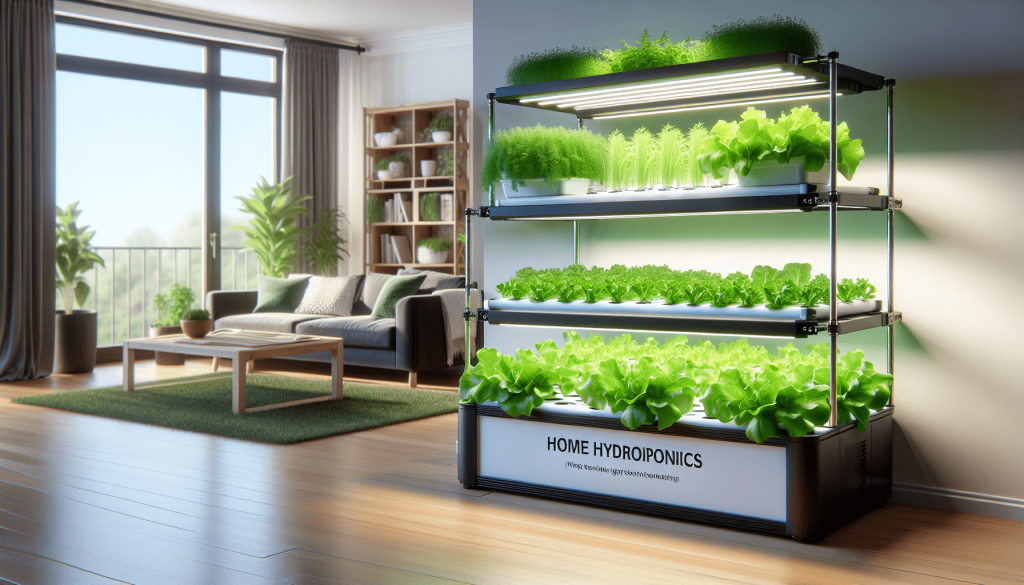
Lighting for Hydroponic Plants
Importance of proper lighting
Light is a critical component of plant photosynthesis. Without sufficient light, your plants won’t thrive regardless of how well you manage other aspects of your hydroponic garden. The right lighting can lead to faster growth and higher yields.
Different types of grow lights
The main types of grow lights include fluorescent, LED, and HID (High-Intensity Discharge) lights. Fluorescent lights are cost-effective and suitable for leafy greens and herbs. LED lights are more energy-efficient and emit less heat, making them ideal for a wider range of plants. HID lights are powerful but can generate a lot of heat and may be best suited for larger operations.
How to choose and set up grow lights
Your choice of grow lights should depend on the types of plants you’re growing and the size of your setup. For most home gardeners, LED lights offer a good balance of efficiency, effectiveness, and price. Ensure your lights are positioned close enough to the plants to promote growth but not so close that they cause heat damage. Adjust the height of your lights as your plants grow.
Nutrient Solutions
Fundamentals of hydroponic nutrients
Hydroponic nutrients are divided into macronutrients (nitrogen, phosphorus, potassium, calcium, magnesium, and sulfur) and micronutrients (iron, manganese, boron, zinc, copper, molybdenum, and chlorine). These nutrients must be dissolved in water to create a nutrient solution, which is then delivered to the plant roots.
Preparing your nutrient solution
To prepare your nutrient solution, follow the instructions provided with your nutrients, as concentrations can vary. Start with clean, filtered water to prevent any unwanted elements from affecting your plants. Mixing in the nutrients at the recommended ratios is crucial for preventing nutrient deficiencies or toxicities.
Maintaining the right nutrient balance
Regularly test the pH and electrical conductivity (EC) of your nutrient solution to ensure the conditions are optimal for plant uptake. The ideal pH range for most hydroponic plants is between 5.5 and 6.5. Adjustments to the nutrient solution might be necessary over time to maintain this balance, as plants absorb nutrients at different rates.
Water Quality and Management
Importance of water quality in hydroponics
Water quality is paramount in hydroponics because plants are directly exposed to and reliant on the water-nutrient solution for their growth. Poor quality water can introduce harmful pathogens or chemical imbalances that disrupt plant health.
Testing and adjusting water pH
Regular testing of your water’s pH is crucial, as it affects nutrient availability to your plants. If the pH is outside the optimal range, you can adjust it using pH up or pH down solutions. Consistently monitoring and adjusting the pH will help ensure your plants can absorb the nutrients they need.
Managing water temperature and oxygen levels
Water temperature should be kept between 65°F and 75°F to promote healthy root growth and nutrient uptake. Water that is too cold can slow plant growth, while too warm can lead to oxygen depletion and root diseases. Using an aquarium heater or chiller can help maintain the right temperature. Additionally, ensure adequate oxygenation of the nutrient solution with air stones or pumps to prevent root rot.
Planting and Propagation
Methods for starting seeds for hydroponics
You can start seeds for hydroponics using starter plugs made from materials like rockwool, coconut coir, or peat moss. Place the seeds in the plugs, keep them moist, and in a warm location with sufficient light. Once the seedlings develop roots and a set of leaves, they’re ready to be moved to your hydroponic system.
Transplanting seedlings to the hydroponic system
When transplanting, handle the seedlings gently to avoid damaging the roots. Transfer them into the growing media of your hydroponic system, ensuring the roots make good contact with the nutrient solution. Monitor them closely for the first few days to ensure they are adjusting well.
Cloning plants for hydroponics
Cloning, or taking cuttings, is another method of plant propagation suitable for hydroponics. Select a healthy parent plant and cut a 4-6 inch stem section. Remove the lower leaves, dip the cut end in rooting hormone, and place it in a growing medium. Keep the humidity high until roots develop, then transfer the clone to your hydroponic system.
Maintaining Your Hydroponic Garden
Daily and weekly maintenance tasks
Regular monitoring of your hydroponic garden is essential for spotting and addressing issues early. Daily checks should include observing plant health, verifying the functioning of equipment like pumps and lights, and checking water levels. Weekly tasks might involve cleaning components, testing and adjusting nutrient solutions, and pruning plants as needed.
Detecting and solving common plant problems
Be vigilant for signs of nutrient deficiencies, pests, and diseases. Yellowing leaves, stunted growth, or spots on leaves can indicate a problem. Identifying the issue early is key to resolving it without significant harm to your plants. Adjusting nutrient solutions, introducing beneficial insects, or using organic pesticides are common interventions.
Harvesting your hydroponic plants
Knowing when to harvest depends on the plant species. Leafy greens are often ready when they’ve reached the desired size. For herbs, harvesting just before flowering ensures peak flavor. Fruits and vegetables may have specific indicators, such as color change. Always use clean, sharp scissors or knives to harvest, to reduce stress on the plants.
Environmental Control
Controlling temperature and humidity
Maintaining the right temperature and humidity in your hydroponic garden is crucial for optimal plant growth. Use fans, heaters, or air conditioners as needed to keep the environment within your plant-specific requirements. Using a dehumidifier or humidifier can help control humidity levels.
Pest management in hydroponics
Pests can be a challenge in hydroponics but managing them is possible. Keep the growing area clean, use insect screens on windows, and inspect new plants before introducing them. Biological controls, like introducing predator mites for spider mites, can be effective, as can selective organic pesticides.
Ensuring proper air circulation
Good air circulation is essential for preventing mold, mildew, and certain pests. Use fans to maintain airflow, ensuring it’s not directly strong on the plants, which could cause stress or drying out. Proper ventilation keeps CO2 levels adequate and helps control temperature and humidity.
Starting your hydroponic garden might seem daunting initially, but with the right setup and a bit of patience, you’ll soon enjoy the fruits (and vegetables) of your labor. This guide hopefully has illuminated the path toward successful hydroponic gardening at home, bringing you closer to harvesting your fresh, homegrown produce.

